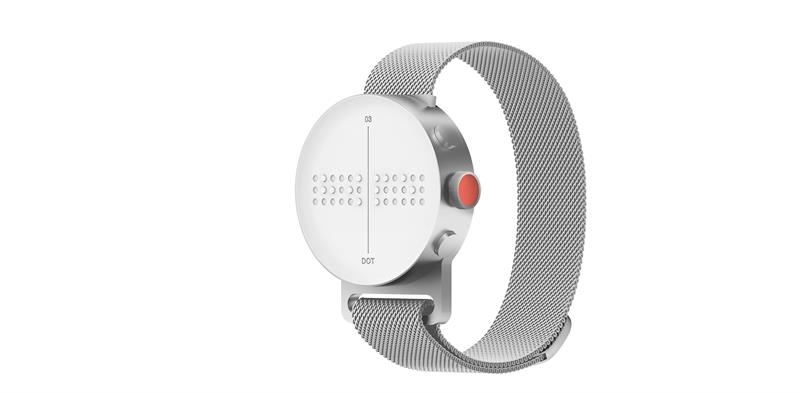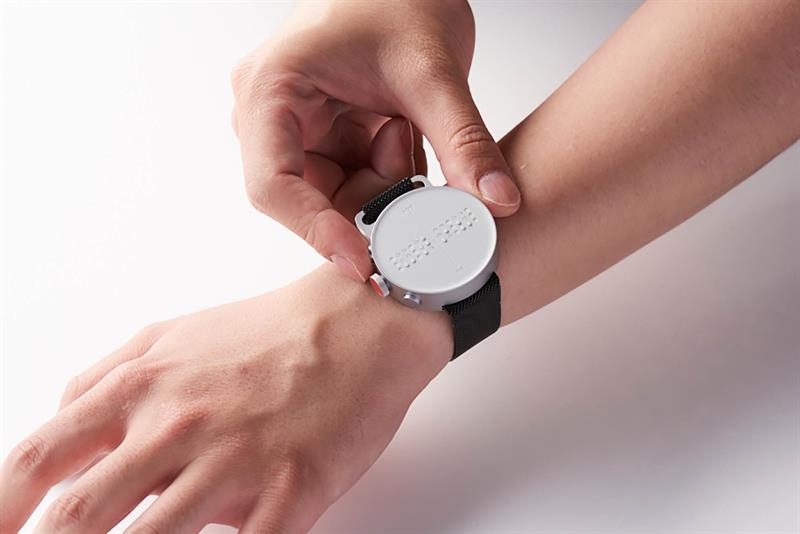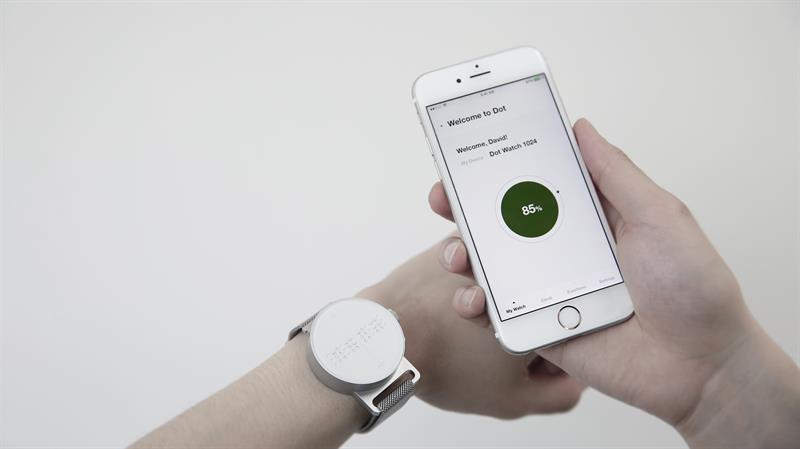An estimated 285 million people in the world are visually impaired, this includes legally blind and visually impaired persons (VIP). Yet, for the last two decades there have been no new technology innovations geared towards these groups, according to ‘Dot’, a braille smart watch producer.
“Right now, technology for VIP is expensive, bulky and often limited,” Ahrum Choi, the Director of Social Impact at Dot says. “Approximately only 5% of VIP worldwide have the privilege of owning braille devices. Educational and day-to-day life has, therefore, remained severely limited.”
Dot intends to alleviate this “digital divide” between visually impaired and sighted communities by providing a technology which is inclusive, easy-to-use and accessible.


Dot is a braille smart watch producer for the blind, founded in 2015 with the goal of closing the information gap between the sighted and visually impaired communities |
The concept for such a focus was inspired by Dot’s CEO Eric Ju Yoon Kim’s observation during his time at university. Kim noticed that while most of his peers used tablet devices, a blind classmate was forced to lug around a large textbook – which took considerably more effort.
According to MIT, less than 1% of all texts have braille translations. This is because embossing paper to form the bumps is a lengthy process. Take the bible for example; in braille format it spans around 40 books. It’s also expensive to create. A single line of braille typically costs around $3-5k.
Moreover, when used over time, braille dots get worn out, making it tricky to differentiate between the shapes/patterns.
Although visually impaired-friendly features are available on most tablets, accessibility, according to Kim, remains a glaring issue.
Dot was founded in 2015, with the mission to innovate the auxiliary equipment market for the disabled by developing lower-priced, lighter products that facilitating high-efficiency operation.
The main goal in development was to increase affordability and the development of Dot’s own Active Braille Technology made this possible, reducing the size and cutting production costs by more than ten times, increasing speed and keeping energy consumption low.
The Dot Smartwatch is seen by the company as an entry device into the assistive technology market.
Based on its technology, a low-price ‘Dot Mini’ for developing countries, integration into utilities like ATMs, and a ‘Dot Pad’ are already in development for release in 2017/18.
Dot was developed in close relationship with Braille education institutes all over the world, to deliver a final product that fits the actual needs of blind and VI people.
“With only 5% of visually impaired people having access to braille devices, education and day-to-day life has been severely limited.” Ahrum Choi |
Key to its technology is the electromagnetic actuator, which the company was successful
in mass-producing after several years.
The team created a micro actuator – a microscopic servomechanism that creates and then transmits energy so to operate a mechanism or system, and developed this using electro-magnetism, that is, the interaction of electric currents or fields and magnetic fields.
“This is different from piezo-electric actuators– the existing technology used in braille tech – mainly due to its size and weight,” explains Choi. “Our technology is 20 times smaller and 10 times lighter. This also means it’s 10 times cheaper when compared to existing braille cell technologies. Dot cell is the smallest, most cost-efficient, and the most mobile technology for electronic Braille displaying.”
Choi continued: “This actuator is the core behind all of the company’s devices, including its first success, the Dot Watch.
“This wearable device was the world’s first braille smartwatch for the blind. Before this, a VIP would have to open a watch lid and touch the hour and minute hands in the dial to know the time,” explains Choi.
“There are several issues with this,” Choi adds, “because the hands move when you touch it, and if you are not sensitive with your fingers it’s difficult to actually read the time. This method also makes it hard to determine the precise time. Our product, however, allows users to read the exact time in braille.”
Not only that, but users can also receive notifications and messages, like a typical smart wearable.
The Dot Watch is connected to a user’s smartphone via Bluetooth and features 24 shifting dots and four pins that are powered by magnets and electrical signals. The information is relayed from the phone into braille onto the “refreshable” watch display. In other words, as they receive information, the pins rise up from the ‘dots’ – sort of circular spots on the watch face – to create the appropriate pattern/s.
Despite this small number of pins, the refreshable display enables users to read entire notifications sent to the watch. Dot Watch wearers simply read up to the last letter on the display, then remove their finger, the integrated touch sensor notifies the pins to refresh and bring up the next series of letters. This means personal messages can be read - across the surface of the 43mm radius circle - in private. Unlike traditional voice-assistive technology, which is found in most current smartphones, that reads what is on screen out loud to the individual.
“We have an in-house research centre in Korea which focuses purely on the actuator. It took us nearly 3 years to make dot cells, but in 2016 we succeeded and were able to proceed with the launch of the Dot Watch,” says Choi.
Vibration patterns
To indicate different types of notification (e.g. a phone call and a message), the watch also features different vibration patterns. Wearers can then use the buttons on the side of the watch to read select information.
The device comes with the option to have scrolling automated or manual to make it accessible to both proficient and slower braille readers.
As for the future, the company has already expanded with the Dot Mini - the Kindle for the blind, and the Dot Pad - the iPad for the blind, as Choi describes them.
The Dot Mini is designed to enhance the vision of supplying educational devices to the visually impaired, with a focus on children in developing countries who are not able to afford costly devices.
While the company intends for the Dot Pad to be the next product to make an impactful social difference in the areas of education, employment, and access to information for the blind and the visually impaired.
The watch connects to a mobile device via Bluetooth, so users are able to recieve notifications in a braille format |

“In a world of video content and images,” Choi says, “the information gap for the blind and visually impaired is getting bigger and bigger. This is because the only technology that allows them to have real-time information in tactile are the one-line braille displays.”
Choi continues, “The problem with one-line braille display is that information can only be given linearly.” Imagine having to calculate math problems horizontally or read an entire book one sentence at a time.
“But not only that,” Choi says, “there is a limitation in expressing images, shapes and sizes with one-line of braille display.” Things like graphs or spreadsheets become impossible.
“But with a multi-layered braille display – like the Dot Pad features – we will be able to show images, graphics, 2D figures, and more. It is our most ambitious innovation so far.”
The company is currently working on its Dot Public, a smart-city solution for inclusive technology supporting information. Through this tech, the company hopes to make public infrastructure accessible - having information accessible in bus stops, public buildings and all kinds of transportation.













